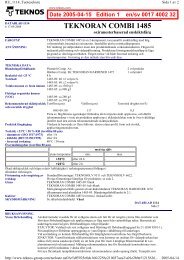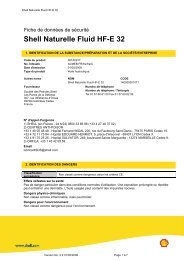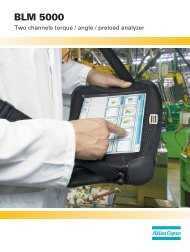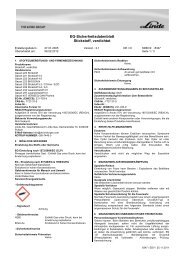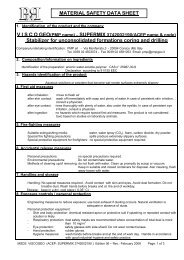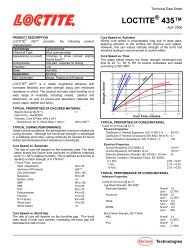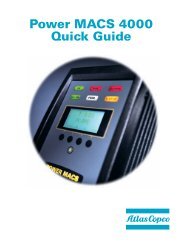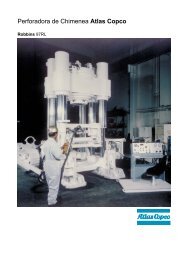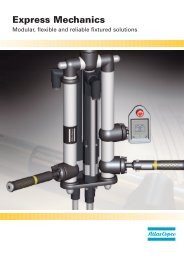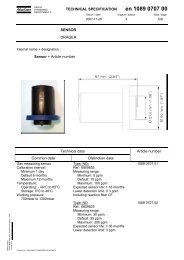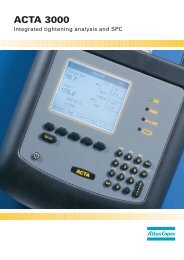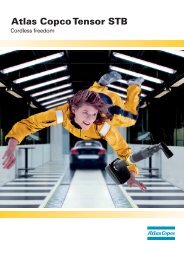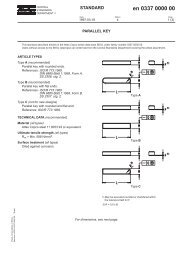Ergonomics - Atlas Copco
Ergonomics - Atlas Copco
Ergonomics - Atlas Copco
Create successful ePaper yourself
Turn your PDF publications into a flip-book with our unique Google optimized e-Paper software.
1.5 m/s 2 . For a grinding machine with a rigid<br />
mass loaded support handle, readings were<br />
down to around 0.5 m/s 2 . We decided, how-<br />
ever, to provide the machine with a lighter<br />
plastic handle, thus saving 0.4 kg in weight.<br />
Isolation of vibration with<br />
a dominant direction<br />
When designing this type of percussive<br />
hand tool, one of the tasks is to develop<br />
a damping system that can transfer high<br />
feed forces over a soft mass spring system.<br />
One source of vibration is the forward and<br />
return action of the impact piston. This<br />
action causes alternating pressures on the<br />
front and rear parts of the piston, with cor-<br />
responding oscillating reactionary forces<br />
on the machine housing.<br />
The isolation built into the machine<br />
also has to be soft. The impact frequency<br />
for these tools often lies around 30 Hz,<br />
therefore the isolation system must have<br />
a natural frequency of its own that is well<br />
below this frequency.<br />
The mass of the machine cannot be in-<br />
creased too much without adversely affect-<br />
ing the design, therefore the spring must be<br />
soft. The damping system on <strong>Atlas</strong> <strong>Copco</strong><br />
Fig. 3.17 Analysis of the grinder in running mode as seen from the front end. Above left: the<br />
machine is fitted with a stiff handle moving in phase. Below left: the machine is fitted with an<br />
anti-vibration handle moving out of phase. The question is, which solution is the best?<br />
111



